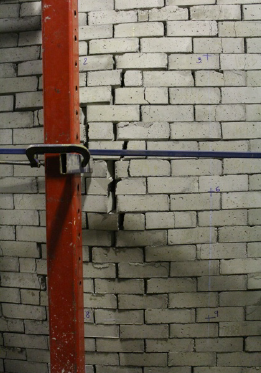1 Senior Lecturer, Centre for Infrastructure Performance and Reliability, The University of Newcastle, Callaghan, NSW, 2308, Australia, yuri.totoev@newcastle.edu.au
2 PhD, Centre for Infrastructure Performance and Reliability, The University of Newcastle, Callaghan, NSW, 2308, Australia, zhiyu.wang@uon.edu.au
ABSTRACT
Masonry walls are often used in multi-storey framed structures as infill panels. A new masonry system has been developed to improve the seismic behaviour of framed structures with masonry infill panels. It is called semi interlocking masonry (SIM). In this system dry-stack infill panels are built with masonry units capable of relative sliding in-plane of a panel. SIM panels have reduced in-plane stiffness and increased frictional energy dissipation capacity compared with traditional masonry infill panels. Under seismic loads these panels do not detrimentally interfere with the natural frame vibration but rather positively contribute to earthquake resistance mainly by increasing damping. A universal steel testing frame was built to test this new masonry system. A cyclic displacement test was performed to evaluate the in-plane behaviour of topologically interlocking SIM panel. An air bag test was performed to evaluate out-of-plane structural integrity on this masonry panel. This paper presents force-displacement graphs, energy dissipation analysis, and comparison to the previously performed similar test with RC frame. Results indicate that SIM has considerable out-of plane strength and stability and can improve the seismic behaviour of framed structures with masonry infill panels.
KEYWORDS: dry stack, masonry, interlocking, in-plane, out-of-plane, energy dissipation
237.pdf



